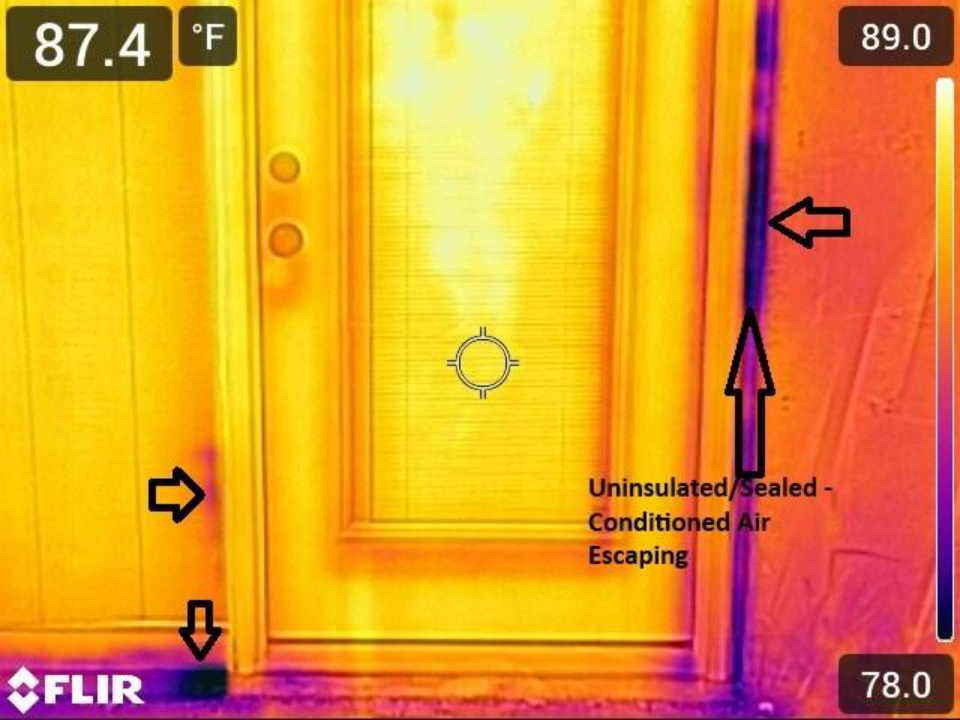Written By: Sean Struckmeyer | Tech Inspect Home Services LLC
1. Introduction
Thermal inspection services reveal hidden issues in your home using advanced infrared technology. At Tech Inspect Home Inspections, we use thermal imaging on each inspection to deliver a comprehensive view of your property’s condition. In this article we’ll provide an understanding how thermal inspections work and the benefits they unlock empowers you to protect your investment, improve energy efficiency, and ensure a safer living environment.
In this guide, we’ll explore infrared thermography, outline the inspection process, highlight real-world success stories, break down costs versus value, and explain why choosing a certified professional matter. Let’s shed light on the unseen and give you clear, actionable insights.
2. What Is a Thermal Inspection?
Infrared thermography uses specialized cameras to detect surface temperature variations across walls, ceilings, floors, and electrical panels. Every material emits infrared radiation based on its temperature; thermal cameras translate these signals into color-coded heat maps. Cooler areas appear in blues and purples, while warm or hot spots glow in reds and yellows. The picture we see in the view finder is relative to what the camera is looking at. For example, If your looking at a circuit breaker panel with a thermal camera and one of the breakers is glowing compared to the others that means it’s hotter than everything around it. But, that’s not enough, you still have to interpret the results and understand what you are looking at, to determine if there’s an issue or not.
Thermal Inspections work best with large temperature differences. Approximately 20 degrees provides really good readings. We can see thermal bridging easier and missing gaps in insulation when it’s hot outside or cold outside. Think home’s indoor temperature plus or minus 20 degrees.
Unlike a traditional visual inspection, thermal imaging sees what the naked eye cannot: trapped moisture behind drywall, missing insulation in attics, and overloaded circuits in your breaker panel. Tech Inspect Home Inspections integrates thermal scans with our thorough home inspection checklist to ensure no detail is overlooked. You receive annotated thermal images paired with explanatory notes, making complex data easy to understand.
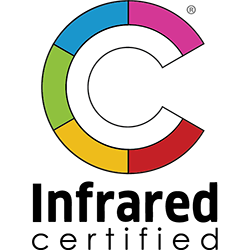
3. Top Benefits for Homeowners
Thermal inspections offer a range of advantages that save you money, enhance safety, and preserve your home by finding any issues early.
A Thermal Inspection Supports:
- Early Detection of Water Intrusion Locate hidden leaks around windows, roofs, and plumbing fixtures before mold and structural damage occur or get wrose.
- Energy Efficiency Optimization, Pinpoint drafts, insulation gaps, and roof heat loss to reduce heating and cooling costs.
- Electrical System Safety Identify overheating breakers, faulty wiring, and loose connections that pose fire risks.
- Structural Assessment Reveal subsurface voids, moisture accumulation in foundations, and framing anomalies.
- Pest and Wildlife Monitoring Detect rodent nests or insect infestations by spotting the heat signatures of living creatures.
By catching these issues early, you avoid expensive repairs, lower utility bills, and maintain a healthier, safer home.
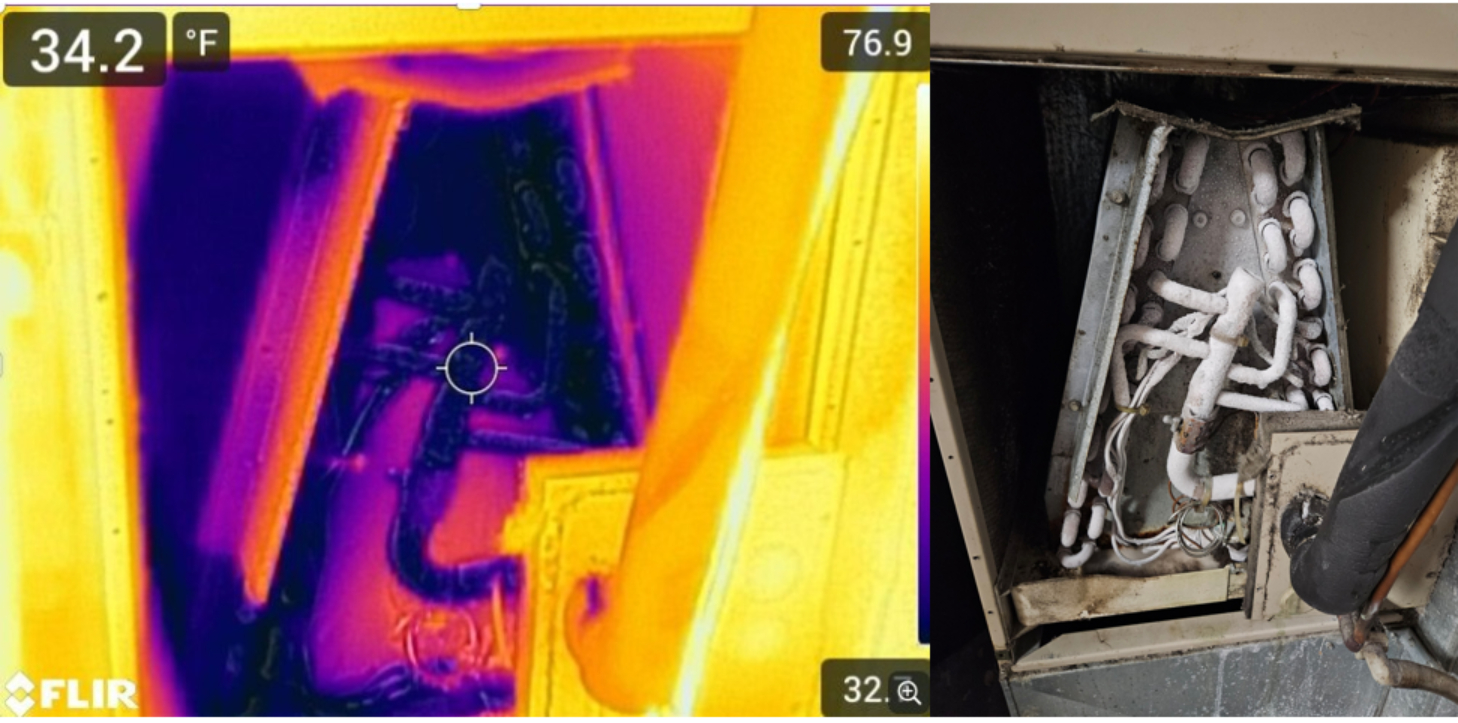
4. Thermal Inspection as Part of a Home Inspection
So how do we employ our thermal camera on our home inspections?
We use our camera throughout the inspection on the inside of the house. We seldom use it on the outside looking in, to eliminate the chance of accidentally pointing it at the sun and ruining the camera…. It’s an expensive piece of equipment and we’d like to keep using it!
Once we are inside, we’ll use the thermal camera to scan for various items such as:
- On the Electrical Inspection:
- We Look for Overheating Breakers (we can quickly scan it)
- Wires or connections that are overheating
- On the Heating and Cooling Inspection:
- We check the relative temperature output on heating and cooling mode
- We can do a quick sample of the vents to ensure we’re getting a consist temperature across them, if a particular vent is showing a large difference in temperature and we don’t’ feel much air, then the ductwork may be obstructed which we’ll want to look for!
- Cooling mode should be around 65 degrees coming out of the vents
- Heating Mode should be around 100 degrees.
- We can sometimes see the vents in the wall cavities and identify loose connections
- We can quickly check the plenum and elements to be sure they are producing correctly
- On the Plumbing Inspection:
- We scan around the toilets, showers, sinks and drains for non-visible leaks
- We can scan the hot water heater and it’s exhaust and make sure it’s working properly
- Is the home on a well? We can scan the pressure tank to ensure it’s not water logged.
- On the Interior Inspection:
- We scan around windows looking for leaks
- We scan around doors looking for leaks
- We can quickly scan around and look for large gaps in insulation
*If we find anything that looks like moisture, we have moisture meters to help measure and determine if it is in fact moisture. Trust but verify!
This approach ensures clarity and gives you confidence in every recommendation because we looked at the home as a whole!
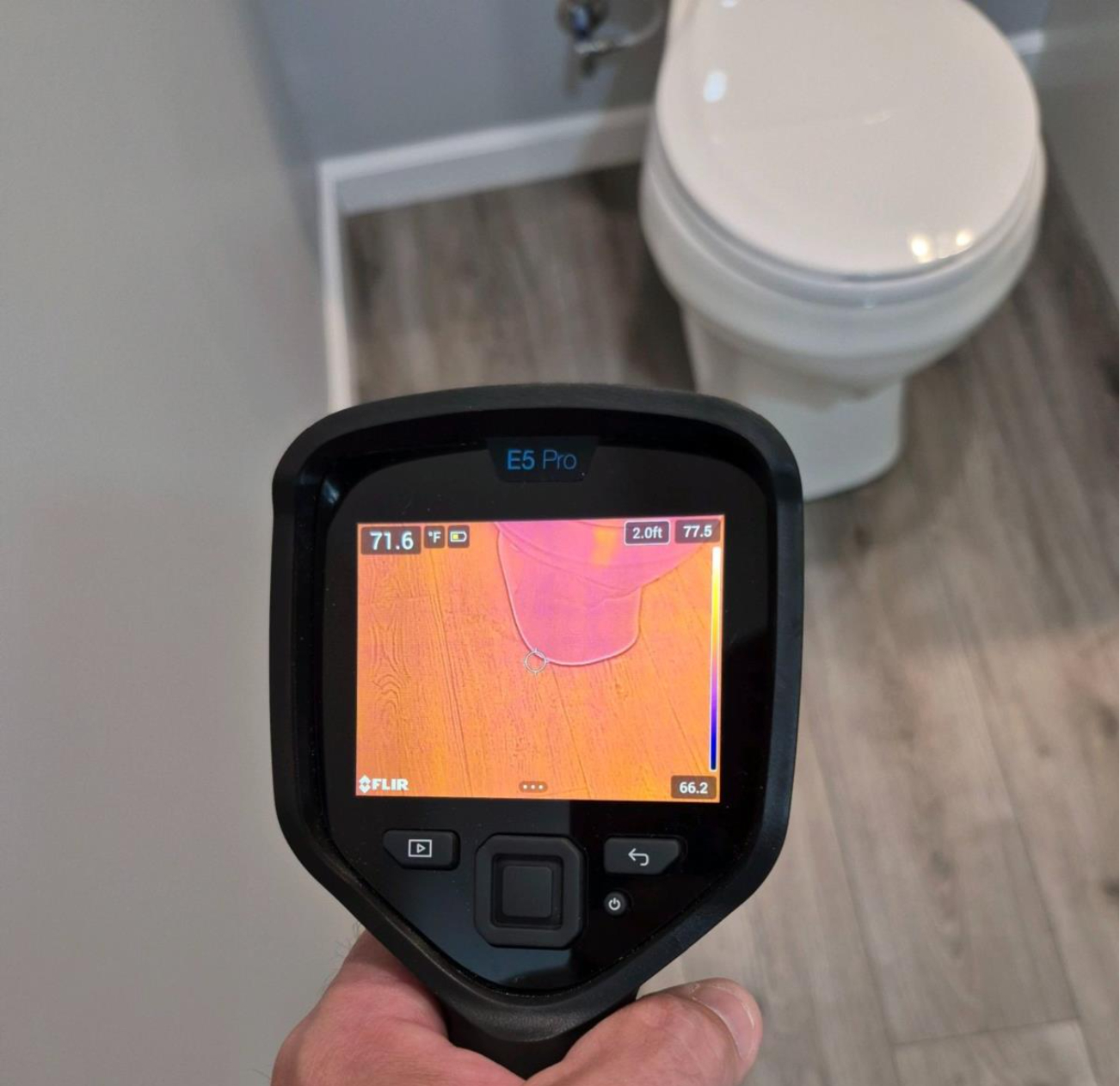

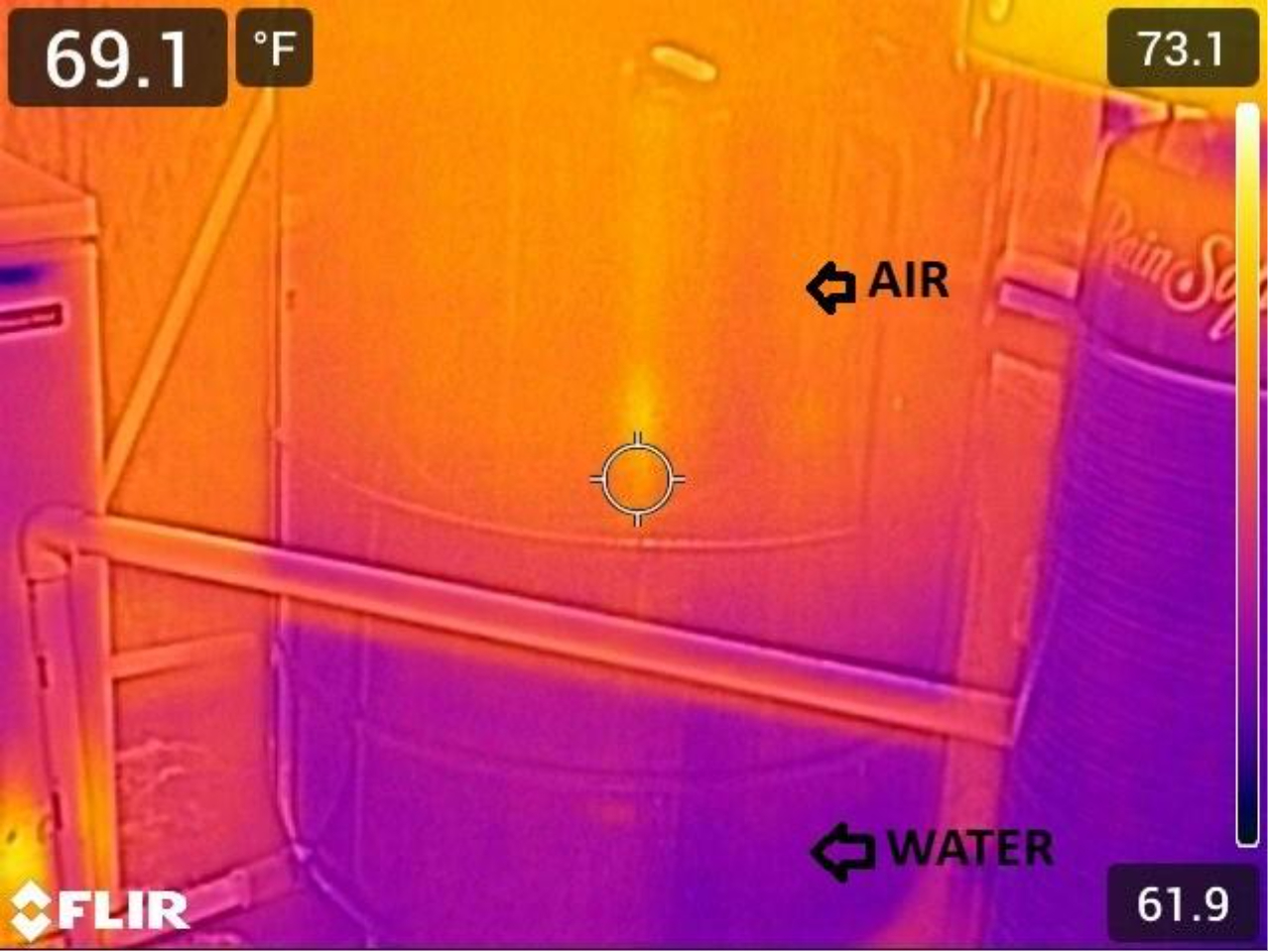
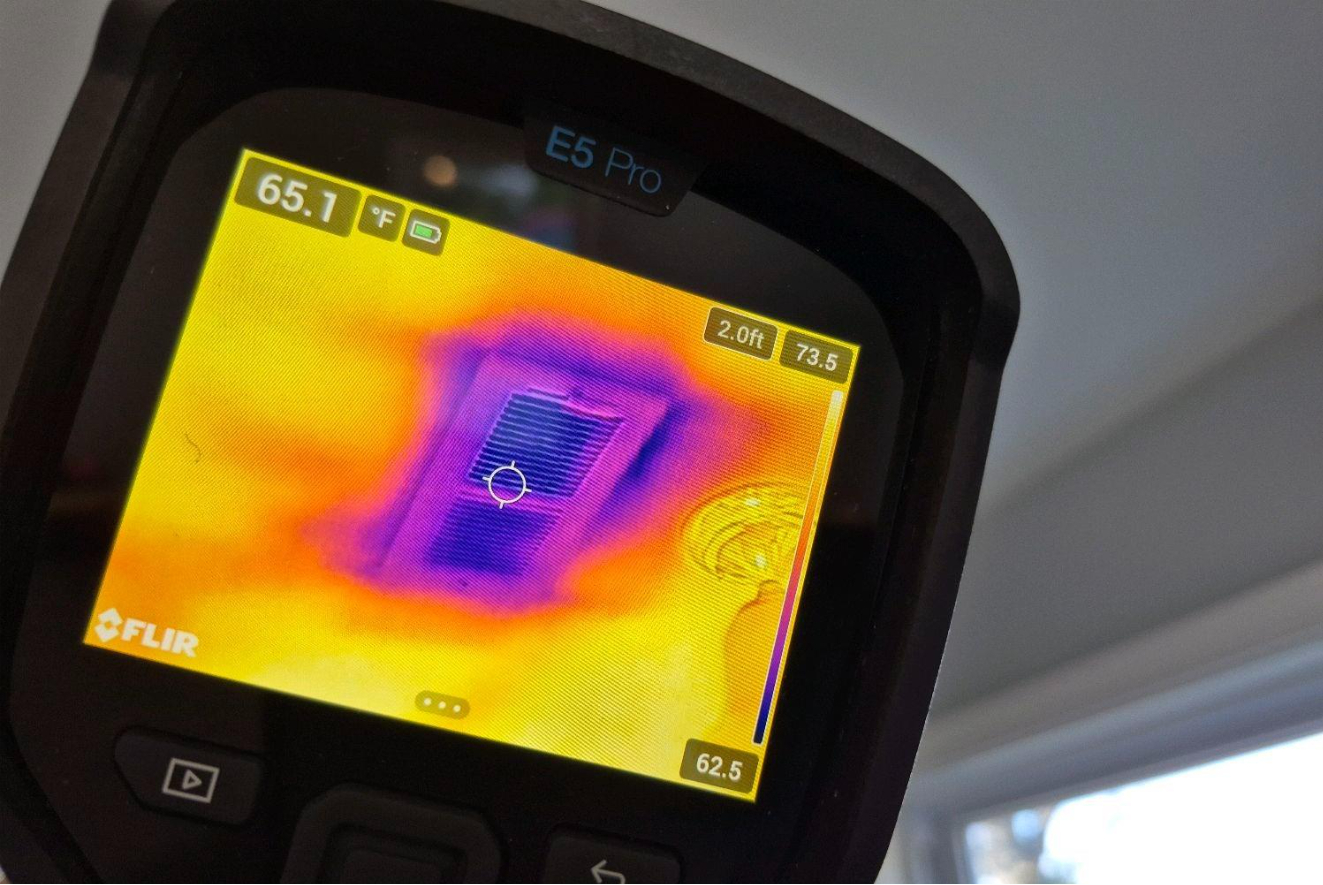
5. Thermal Inspection as a standalone service
We offer a Stand-Alone Thermal Inspection as well, same tools but with a specific problem or problems to investigate.
Our approach to this service is to help homeowners investigate specific problems with the same thorough building science mindset and advanced tools.
Our Thermal Inspection uses advanced infrared imaging to uncover hidden issues in your home, non-invasively and with precision.
This service is ideal for homeowners, buyers, or sellers looking to identify specific problems without a full home inspection. To do this, we discuss the concerns with the client, our approach to the investigation, and what questions we want to answer for our clients.
This inspection is performed to answer specific questions, such as:
- “Why is this room always colder in the winter?”
- “Is there moisture behind that wall?”
- “Did the insulation get installed properly?”
- “Do I have a leak in the roof?”
- “Is the toilet leaking under the floor?”
- “Is there a water leak at the window?”
- “Why is that window drafty in the winter?”
This inspection is non-destructive, fast, and highly effective and provides a comprehensive report detailing the problem investigated and our findings.
You’ll receive visual evidence and clear insights, with no holes in your walls and no messy repairs just to investigate a hunch.
6. Real-Life Success Stories
Case Study: A homeowner noticed what appeared to damp spot in their garage wall. A Tech Inspect Thermal Inspection was able to confirm it. A complete summary is documented in this Blog Post: https://www.techinspecthome.com/gutter-and-roof-installation-issues-lead-to-wood-rot/.
Electrical Fire Risk Averted: During a Home Inspection, our thermal camera exposed a hot spot in the electrical panel, where a few breakers were running about 14 degrees hotter than they should have been. Of greater concern was that the home was vacant at the time with no extraneous loads on the circuit. Tech Inspect was able to immediately alert the homeowner and client to the problem, so that it could be corrected prior to the home’s purchase and a family moving in.
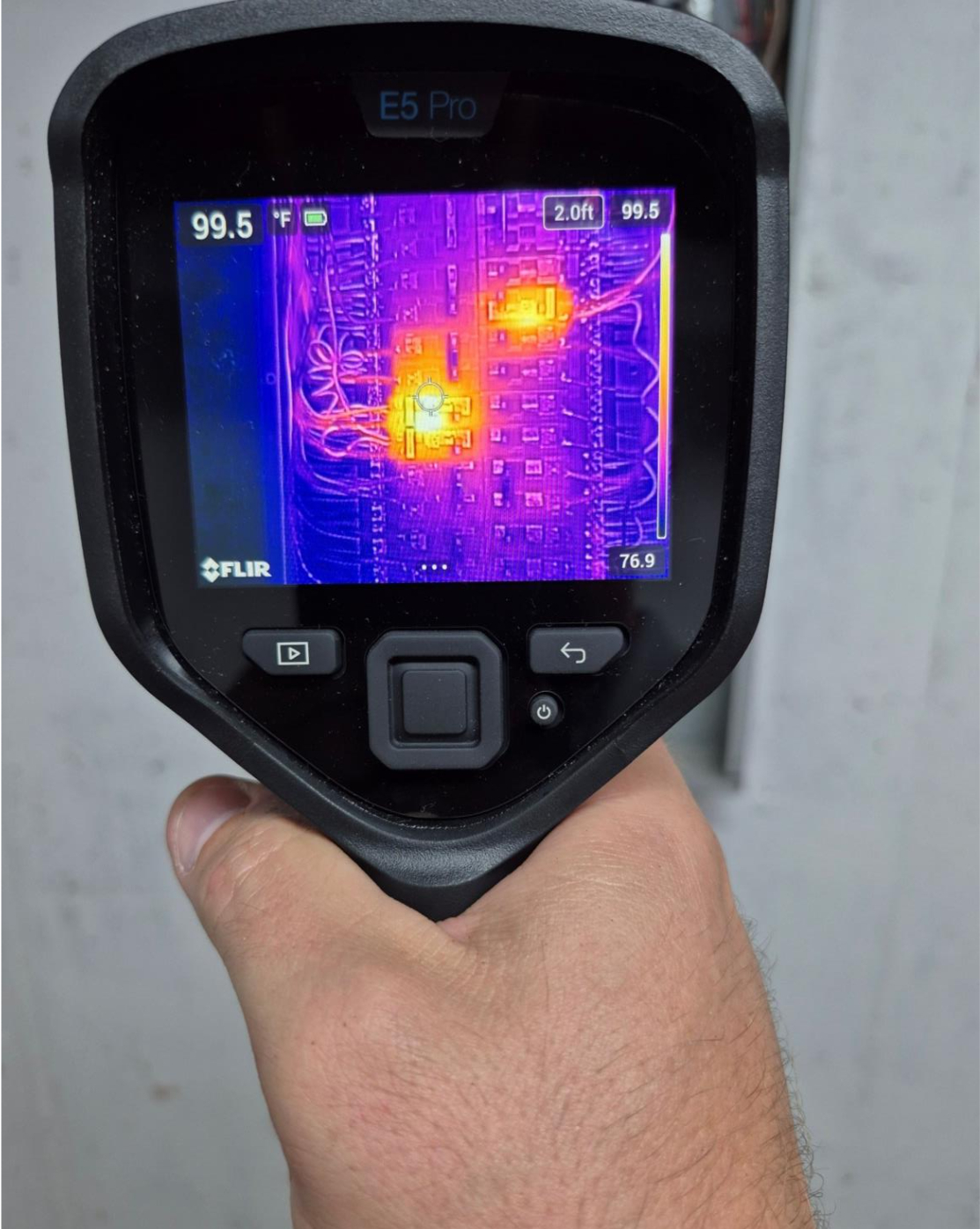
These examples show how combining thermal inspections with our full-service offerings yields decisive, cost-effective solutions.
7. Cost vs. Value Analysis
Investing in a thermal inspection pays dividends in safety, savings, and peace of mind.
Stand Alone Thermal Inspection Service: Fixed Rate Pricing (See our Scheduling Page for Current Pricing) offers a lower cost-effective solution to support a narrowly focused investigation that is faster and more specific than a whole house inspection.
Typical Complete Home Inspection Fees (See our Scheduling Page for Current Pricing for Current Pricing)
- Small homes (up to 2,000 sq. ft.): $400–$450
- Medium homes (2,000–3,500 sq. ft.): $475–$600
- Large homes (3,500+ sq. ft.): $600 and up.
Quantifiable Savings
- Catching a small roof leak early can avoid $5,000–$15,000 in water damage repairs.
- Improving insulation based on thermal data often delivers a 15–30% reduction in heating and cooling bills.
- Preventing electrical fires protects homes valued well over $200,000.
Long-Term Return on Investment Documented thermal inspection reports add credibility in real estate transactions, often leading to quicker sales and higher offers.
8. Choosing the Right Inspector
Selecting a qualified professional ensures accurate diagnostics and maximum value.
Essential Certifications
- Thermography Training
- Licensed home inspector with additional training in building science
Report Standards – Quality Reports Should Include the Following:
- Thermal images annotated with temperature scales and clear labels
- Severity ratings for each issue and prioritized repair recommendations with recommended contracts provided in the report.
- Plain-language summaries that homeowners and real estate agents can easily interpret with options or suggestions of what to do next.
Tech Inspect Home Inspections meets all these criteria, delivering thorough professional reports and referrals to trusted specialists.
9. DIY Infrared Cameras vs. Professional Services
While smartphone attachments and consumer thermal cameras are increasingly affordable, they come with limitations.
Entry-Level Device Constraints
- Lower image resolution that obscures fine details
- No compensation for environmental factors like wind chill or solar gain
- Limited temperature range and calibration issues
Risk of Misinterpretation
- False positives may lead to unnecessary repairs and expenses
- False negatives could let dangerous issues, such as electrical arcing, go undetected
- Incomplete or unstructured DIY reports lack credibility with insurers and buyers
Tech Inspect has invested in quality tools (FLIR) and training along with our reporting software to deliver unparalleled results and support our homeowners. Our clients deserve the best, so we bring the best.
Professional Expertise Counts, Certified thermographers draw on building science knowledge to control inspection variables, time of day, indoor-outdoor temperature differentials, moisture levels, yielding reliable, comprehensive results. Pairing this expertise with Tech Inspect Home Services, training and tools ensure you get the most accurate, actionable data available.
10. Frequently Asked Questions (FAQ)
Are thermal inspection disruptive to my routine? Not at all. Infrared scanning is contact-free and non-invasive. You can remain in the home during the inspection, and no materials are moved or damaged.
How long should I expect the inspection to take? A typical complete home inspection runs 3–4 hours, depending on property size and complexity. The report is delivered within 24 hours of the visit. While a standalone Thermal Inspection can be completed in approximately 1 hour.
Can thermal inspections detect all types of issues? Thermography excels at identifying temperature anomalies linked to moisture, insulation gaps, and electrical faults. Once the inspector finds an anomaly, applying additional inspection techniques and diagnostics helps confirm the anomaly and determine the extent of the issue.
How often should I schedule repeat inspections? For most homes, every 2–3 years strikes a good balance. However, following major renovations, roof repairs, mold remediation, or pest treatments, an additional thermal scan can confirm the effectiveness of those services.
Do you charge extra to perform a thermal scan on a Complete Home Inspection? No! We use this tool as a standard part of our process at no extra cost!
Will a Thermal Inspection Find Mold? Not Necessarily, the thermal camera can identify moisture inside walls, which is required for mold to grow! Then a follow-up mold test can be setup to determine if there’s actually mold growing.
11. Conclusion:
Thermal inspection services deliver an unmatched level of clarity, empowering homeowners to catch hidden issues early, cut energy costs, and enhance safety with a minimal time investment needed. We can do a lot in an hour with the tools we have!
Ready to illuminate what’s been hiding behind your walls? Schedule your comprehensive thermal inspection and full-service home evaluation today.
Visit https://www.techinspecthome.com/inspection-services/ or call (636) 201-6366 to book your appointment. Protect your investment, safeguard your family, and enjoy the confidence of a thoroughly inspected home.
Still Unsure? Take a look at our sample reports to see what a thermal inspection looks like.
